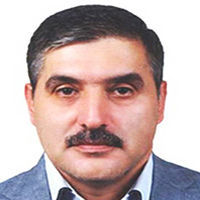Study on Relationships among Bread Wheat Landraces from Geographical Origins across Iran under Supplemental Irrigation and Rain-Fed Conditions
Wheat is one of the most important crops worldwide and one of the most essential commodity in the global market. Many studies showed that it is necessary to increase global wheat production double before 2050 in order to meet the growing demands of the population, changing diets and consuming biofuels. In recent decades, climate changes have complicated the prediction of drought frequency and extent in the Mediterranean Basins. Therefore, more genetic sources are needed to identify lines carrying genes for tolerance and adaptation to drought conditions. One of the most important factors limiting growth, development, and productivity of crops is drought. Landraces breeds have become particularly important as genetic resources adapted to local conditions. An appropriate level of genetic variability in breeding materials and parental germplasm is vital for generating improved germplasm with desired traits that help to increase crop production and thus improve human nutrition. Landraces may facilitate to capture genetic recombination required for creating new genotypes tolerant to biotic and abiotic stresses. It is necessary to comprehend well the available genetic variation in primitive wheat, wild species, and landraces.
A core collection of 249 bread wheat landraces throughout Iran which belong to six different geographic origins were studied under supplemental irrigation and rainfed conditions at Sararood Agricultural Research Station in Kermanshah during 2016-17 growing seasons. Phonological, morphological and physiological traits were scored including days to heading (DTH), days to maturity (DTM), plant height (PH), peduncle length (PL), relative water content (RWC), number of seed per spike (NSPS), 1000 kernel weight (TKW), harvest index (HI), and grain yield (GY). Phonological, morphological and physiological traits were analyzed based on unbalanced combined completely randomization design. Two environments of supplemental irrigation and rain-fed were compared based on Hotelling T square test for the measured traits and multivariate analysis was also used to compare geographic origins in each environment separately. Shannon's index is employed to investigate diversity in germplasm and was utilized GT-bi-plot technique in order to depict relationships among diversity pattern for investigated traits and geographical origins of Iranian landraces.
The results of unbalanced analysis of combined variation and multivariate analyses revealed significant differences among geographical origins of Iran. Multivariate analysis showed significant differences among genotypes with different geographic origins in terms of Wilks’ lambda (0.69, 0.39), Pillai's trace (0.33, 0.81), Hotelling-Lawley trace (0.41, 1.1), and Roy’s greatest root (0.32, 0.57) for all traits at 1% probability level in supplemental irrigation and rainfed conditions, respectively. It means that the present population had high variegation. The results of bi-plot depicted significant differences between south geographic origins landraces and other geographic origins landraces for GY, HI, and TKW under the both supplemental irrigation and rainfed conditions. GT bi-plots revealed that the south landraces were early in flowering with high GY potential and also they indicated more compatibility to unpredictable situations in medium drought (supplemental irrigation) and severe drought (rainfed) conditions. The results indicated earliness (short DTM) as the most important phonologic trait affecting GY under rainfed conditions. South landraces can be suggested as highly valuable resources for using in breeding programs to develop new high yielding cultivars under unpredictable harsh environmental conditions. The examined Iranian wheat landraces showed high variations for important traits including GY, HI, TKW and earliness.
Our finding indicated that the explored variation play an important role in developing new cultivars and may be used in breeding programs aiming for adaptation to drought conditions. It is necessary to use a wide range of breeding strategies in order to gain present diversity in bread wheat which will lead to the expansion of the genetic basis of current cultivars and improvement of new wheat cultivars adapted to dryland conditions.
- حق عضویت دریافتی صرف حمایت از نشریات عضو و نگهداری، تکمیل و توسعه مگیران میشود.
- پرداخت حق اشتراک و دانلود مقالات اجازه بازنشر آن در سایر رسانههای چاپی و دیجیتال را به کاربر نمیدهد.





